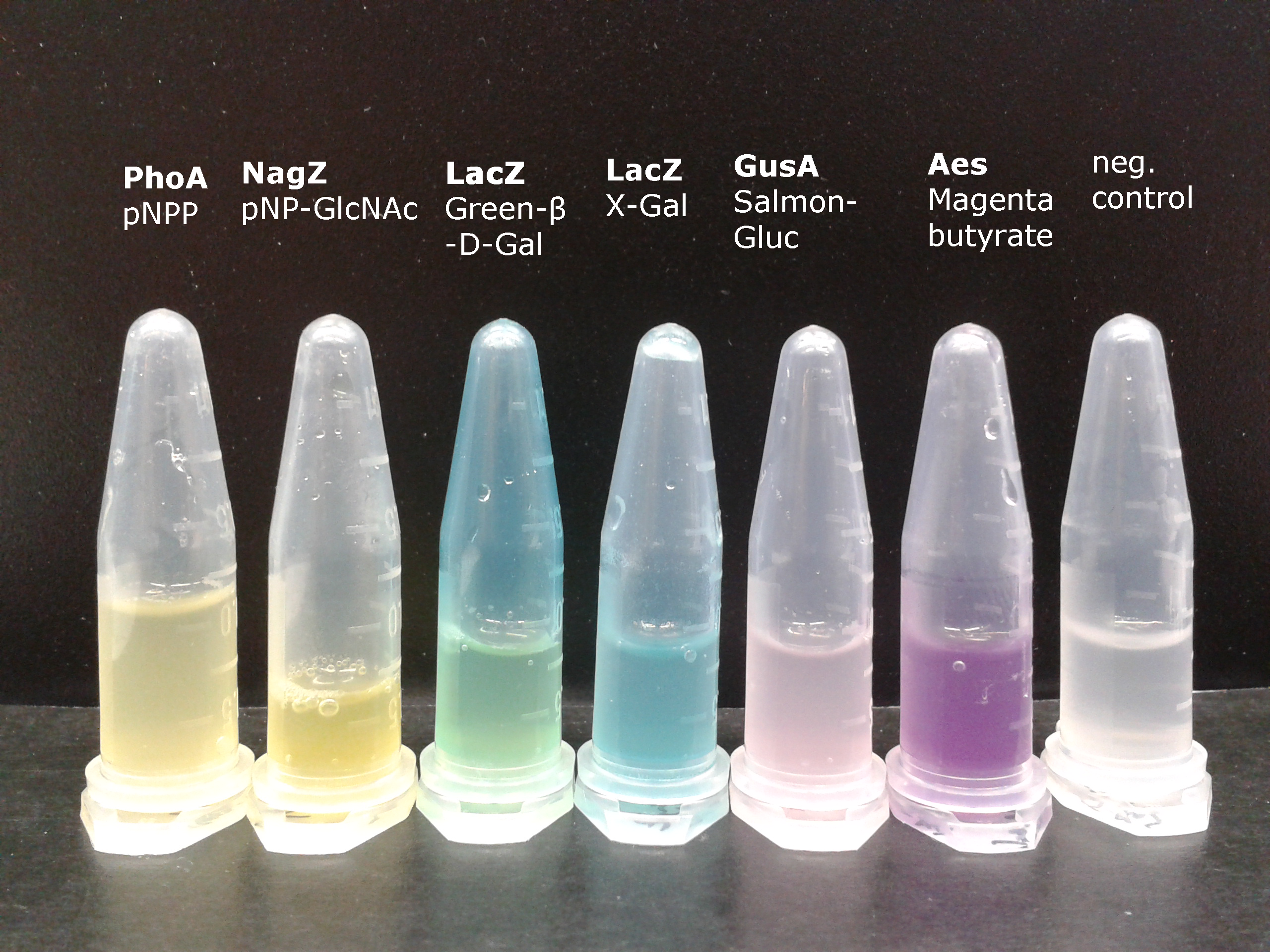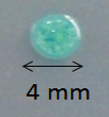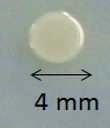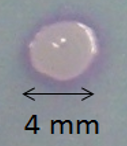Team:ETH Zurich/Experiments 3
From 2013.igem.org
| Line 5: | Line 5: | ||
<p>As our reporter system, we use orthogonal hydrolase enzymes that react with specific substrates to give a chromogenic product. The color produced from the enzyme-substrate reaction gives the cue for the player to carry out the next logical move. The player adds a multi-substrate solution on to colonies on the agar mine-field. In case the player is certain of a colony to be a mine colony, another second specific substrate is added. The substrates react with the enzymes to give the color in couple of minutes and are visible by eye.<br><br> Our minesweeper is becoming better and better so keep on track for updates !</p> | <p>As our reporter system, we use orthogonal hydrolase enzymes that react with specific substrates to give a chromogenic product. The color produced from the enzyme-substrate reaction gives the cue for the player to carry out the next logical move. The player adds a multi-substrate solution on to colonies on the agar mine-field. In case the player is certain of a colony to be a mine colony, another second specific substrate is added. The substrates react with the enzymes to give the color in couple of minutes and are visible by eye.<br><br> Our minesweeper is becoming better and better so keep on track for updates !</p> | ||
| - | [[File:2013-09-16 09.30 (1).png|450px|left]] | + | [[File:2013-09-16 09.30 (1).png|450px|left|thumb|<b>Figure 1: The colorimetric output</b> Our hydrolases can convert specific substrates to an colorimetric output visible by eye. The colors on the pictures are the colors we use for our project. We could create more colors because the hydrolases have a large spectrum of substrates to convert which gives different colorimetric outputs.Here we see the 5 hydrolases (annotated in bold) we use with a specific substrate (annotated in normal weight under the bold hydrolases). As an example of mulit substrate conversion we have lacZ which can convert X-Gal to a blue output and beta-green-X-Gal to a green output]] |
<p>The picture to the left shows different colors produced by the hydrolase-substrate reactions. Each hydrolase was tested with the corresponding substrate in liquid cultures. The hydrolases are ''lacZ'','' nagZ'' , ''aes'', ''gusA'' and ''phoA''. Multiple substrates were tested for the hydrolases as well.</p> | <p>The picture to the left shows different colors produced by the hydrolase-substrate reactions. Each hydrolase was tested with the corresponding substrate in liquid cultures. The hydrolases are ''lacZ'','' nagZ'' , ''aes'', ''gusA'' and ''phoA''. Multiple substrates were tested for the hydrolases as well.</p> | ||
Revision as of 21:23, 2 October 2013
Contents |
Enzyme-substrate reactions
As our reporter system, we use orthogonal hydrolase enzymes that react with specific substrates to give a chromogenic product. The color produced from the enzyme-substrate reaction gives the cue for the player to carry out the next logical move. The player adds a multi-substrate solution on to colonies on the agar mine-field. In case the player is certain of a colony to be a mine colony, another second specific substrate is added. The substrates react with the enzymes to give the color in couple of minutes and are visible by eye.
Our minesweeper is becoming better and better so keep on track for updates !

The picture to the left shows different colors produced by the hydrolase-substrate reactions. Each hydrolase was tested with the corresponding substrate in liquid cultures. The hydrolases are lacZ, nagZ , aes, gusA and phoA. Multiple substrates were tested for the hydrolases as well.
The following table lists each of the specific hydrolase-substrate reactions with the corresponding color produced from the reaction.
| Hydrolase | Complementary substrate / IUPAC name | Visible color | Concentration[M] | ||
|---|---|---|---|---|---|
| LacZ | Beta-Galactosidase | X-Gal | 5-Bromo-4chloro-3-indolyl-beta-galactopyranoside | Blue | |
| LacZ | Beta-Galactosidase | Green-beta-D-Gal | N-Methyl-3-indolyl-beta-D_galactopyranoside | Green | |
| GusA | Beta-glucuronidase | Magenta glucuronide | 6-chloro-3-indolyl-beta-D-glucuronide-cycloheylammonium salt | Salmon | |
| PhoA | Alkaline phosphatase | pNPP | 4-Nitrophenylphosphatedi(tris) salt | Yellow | |
| Aes | Acetyl esterase | Magenta butyrate | 5-bromo-6-chloro-3-indoxyl butyrate | Magenta | |
| NagZ | Glycoside hydrolase | X-glucosaminide X-Glucnac | 5-bromo-4-chloro-3-indolyl-N-acetyl-beta-D-glucosaminide | Blue | |
Beta-galactosidase(LacZ)
Chemical conversion

Colorimetric response in liquid culture
Colorimetric response on LB-Agar
Alkaline phosphatase(PhoA)
Chemical conversion

Colorimetric response in liquid culture
Colorimetric response on LB-Agar
Acetyl esterase(Aes)
Chemical conversion

Colorimetric response in liquid culture
Colorimetric response on LB-Agar
Beta-glucuronidase(GusA)
Chemical conversion

Colorimetric response in liquid culture
Colorimetric response on LB-Agar
β-N-Acetylglucosaminidase(NagZ)
Chemical conversion

Colorimetric response in liquid culture
Colorimetric response on LB-Agar
Do the substrates and enzymes cross-react ?
An enzyme-substrate test matrix (Figure 6) was established to test each substrate against each enzyme. The results were as expected (Figure 6.2) and no cross reaction is visible. The NagZ-X - glucosaminide X-Glunac reveal some difficulties in the liquid culture as well as on the agar plate.
 "
"













